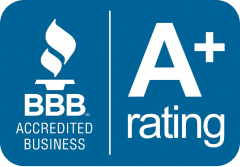Find the Best affordable
Medicare Plan



Andrew Smith
What is Medicare
What is Medicare: Do you understand the distinctions between Medicare’s “parts” – Part A, Part B, Part C, and Part D? There are a number of essential facts regarding Medicare that you should be aware of before registering to ensure that you get the most out of the available Medicare plans and perks.

Facts on the basics of Medicare
Medicare is a federal health-insurance program that covers a wide range of medical costs. The Centers for Medicare & Medicaid Services (CMS), a division of the US Department of Health and Human Services, is in charge of it (HHS). The majority of Medicare recipients are seniors aged 65 and up. Adults with certified medical conditions (such as Lou Gehrig’s disease) or qualifying permanent impairments may also qualify for Medicare benefits.
Medicare, like Social Security, is an entitlement program. The majority of Americans earn the opportunity to participate in Medicare by working and paying their taxes for a certain amount of time. Even if you didn’t work long enough to qualify for Medicare, you may still be able to enroll, albeit you may have to pay a higher premium.
The Medicare program is divided into four sections. Original Medicare refers to Parts A and B of the program. Part C, often known as Medicare Advantage, is a type of private health insurance, whereas Part D covers prescription medicines. The information below provides an overview of the four sections of Medicare insurance programs.
The “parts” of Medicare
Part A, Part B, Part C, and Part D are the four different types of Medicare programs. The following is a list of what each “Part” is about.
Part A of Medicare
Part A of Medicare covers hospitalization. Inpatient hospitalization, limited stay in a skilled nursing facility, limited home health care services, and hospice care are all covered in Part A.
The term “premium-free Section A” refers to the fact that most Medicare Part A beneficiaries do not have to pay a monthly premium to receive coverage under this part of Original Medicare. You’re generally eligible for premium-free Part A if you’ve worked for at least 10 years (40 quarters) and paid Medicare taxes during that time. Otherwise, you’ll have to pay a monthly fee.
Because Medicare Part A normally does not cover the entire cost of your hospital stay, you will most likely be responsible for a portion of the payment. Before Medicare benefits kick in, you’ll have to pay a deductible. After that, Medicare will cover all of your expenses for up to 60 days in a hospital or 20 days in a skilled nursing facility. Following that, you pay a fixed fee up to the maximum number of days covered. For a total of 90 days in a hospital and 100 days in a skilled nursing facility, your Medicare Part A benefits cover some of the expenditures.
Up to 60 “lifetime reserve days” are also covered by Medicare. These are days when you spend more than 90 days in a hospital. You acquire a total of 60 reserve days over the course of your life.
Read More: Is Medicare free?
Medicare Part B
Medical insurance is covered through Medicare Part B. Non-hospital medical expenses such as doctor’s visits, blood tests, X-rays, diabetes screenings and supplies, and outpatient hospital care are covered by Part B insurance. This element of Original Medicare has a monthly premium. People with high earnings may be charged a greater fee. Medicaid, a different government program, can assist low-income Medicare Part B recipients to meet their premiums.
Medicare Part C
Medicare Part C, also known as Medicare Advantage, is a health plan that combines all types of Medicare coverage into one package. It’s provided by private insurance companies that have been contracted by CMS to deliver a Medicare benefits package as a supplement to Original Medicare. Enrolling in a Medicare Advantage plan is voluntary, but you must have Original Medicare, Parts A, and B, in order to get this private insurance. If you have a Medicare Advantage plan, you may be required to continue paying your Part B premium.
While all Medicare Part A and Part B coverage (excluding hospice care) must be provided by Medicare Advantage plans, plans can additionally offer a variety of additional benefits that vary by the private health insurer. Prescription drug coverage is included in many Medicare Advantage plans, which are referred to as Medicare Advantage Prescription Drug plans. Some plans may have a lower deductible but require you to pay a lesser portion of the remaining charges. Medicare Advantage plans may also cover treatments that Original Medicare, Parts A and B, do not, such as eye exams, hearing aids, dental care, and health care received while traveling abroad in the United States.
Medicare Part D
Prescription drug coverage is available as an add-on to Medicare Part D. Private insurance companies offer Medicare Part D as a stand-alone prescription medication coverage, and the monthly premium varies per carrier. Depending on the plan in which you’re enrolled, you’ll be responsible for a portion of the cost of your prescription drugs. A deductible, a fixed copayment amount, or a percentage of the total prescription cost (called “coinsurance”) are examples of these expenses.
If you need prescription medication coverage, you can acquire it through a Medicare Advantage Prescription Drug plan, if one is available in your area. Enter your zip code in the simple form on this page to see a list of Medicare Advantage Prescription Drug plans available in your area.
If you have a low income and are unable to purchase your drugs while having Medicare Part D coverage, you may be eligible for the Extra Help program, which provides financial support for your monthly premium, deductible, copayment, or coinsurance.
More to explorer

What Is Medicare?
Medicare is a federal health insurance programme for those who meet the program’s requirements, such as those who are 65 or older,

CAN I CHANGE MEDICARE ADVANTAGE PLANS ANYTIME?
Medicare does not pay for preventative or routine eye care services like annual eye exams. If you have a long-term eye condition,

The Truth About Medicare Part B’s Dental Coverage
When using Medicare Part B, can I get my teeth fixed? Actually, both yes and no. Even though Medicare Part B is

